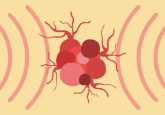Synthetic paper development could improve point-of-care diagnoses
Researchers at KTH Royal Institute of Technology (Sweden; KTH) have developed a new synthetic paper that could enable simultaneous screening for multiple medical conditions and improve the reliability of results of paper-based diagnostics. Their work was recently published in the journal Lab Chip.
Paper-based diagnostic tests can allow for the attainment of medical test results in a fast and cheap way, and have many potential benefits such as in the diagnosis of disease in developing countries where access to medical resources may be limited. However, differences in structure between the sheets of paper can lead to variations in results, affecting the accuracy of such tests.
In most paper diagnostics, cellulose is the basis of the paper material used for absorbing blood and other bodily fluid samples. This paper has an unorganized pattern, with wide variations between one test and another. Unlike standard paper-based diagnostic materials, the test material developed at KTH is synthetic with a predetermined structure.
The fibers in the synthetic paper are arranged on the micrometer level, with the exact distances between fibers, their angles in relation to each other and their thickness all predetermined. This precision translates into more accurate and meaningful results.
As well as producing more accurate and meaningful data, the paper can also enable a user to determine the concentration of one or more biomarkers in a bodily fluid. “For some diseases, there are only small amounts of a biomarker available in the body, which means that the tests have to be very sensitive,” noted Jonas Hansson (researcher at KTH). “We also eliminate the variation between different sheets of paper because of differences in the structure, so all the medical tests will be as accurate.”
At the current time no specific diseases have been singled out for application of the synthetic paper; however, the team believes heart attack screening could be one future possibility.
“Someone who suspects they are having a heart attack [could] check themselves into an emergency room and get results within 20 to 30 minutes. By contrast, the logistics of a hospital today mean test results are likely to take much longer than that. Heart attacks or various kidney diseases require very thorough testing tools, and the synthetic paper offers just that opportunity,” Hansson commented.
Sources: Hansson J, Yasuga H, Haraldsson T, van der Wijngaart W. Synthetic microfluidic paper: high surface area and high porosity polymer micropillar arrays. Lab Chip. DOI: 10.1039/C5LC01318F (2016); Material enables more reliable and meaningful self-screening.






